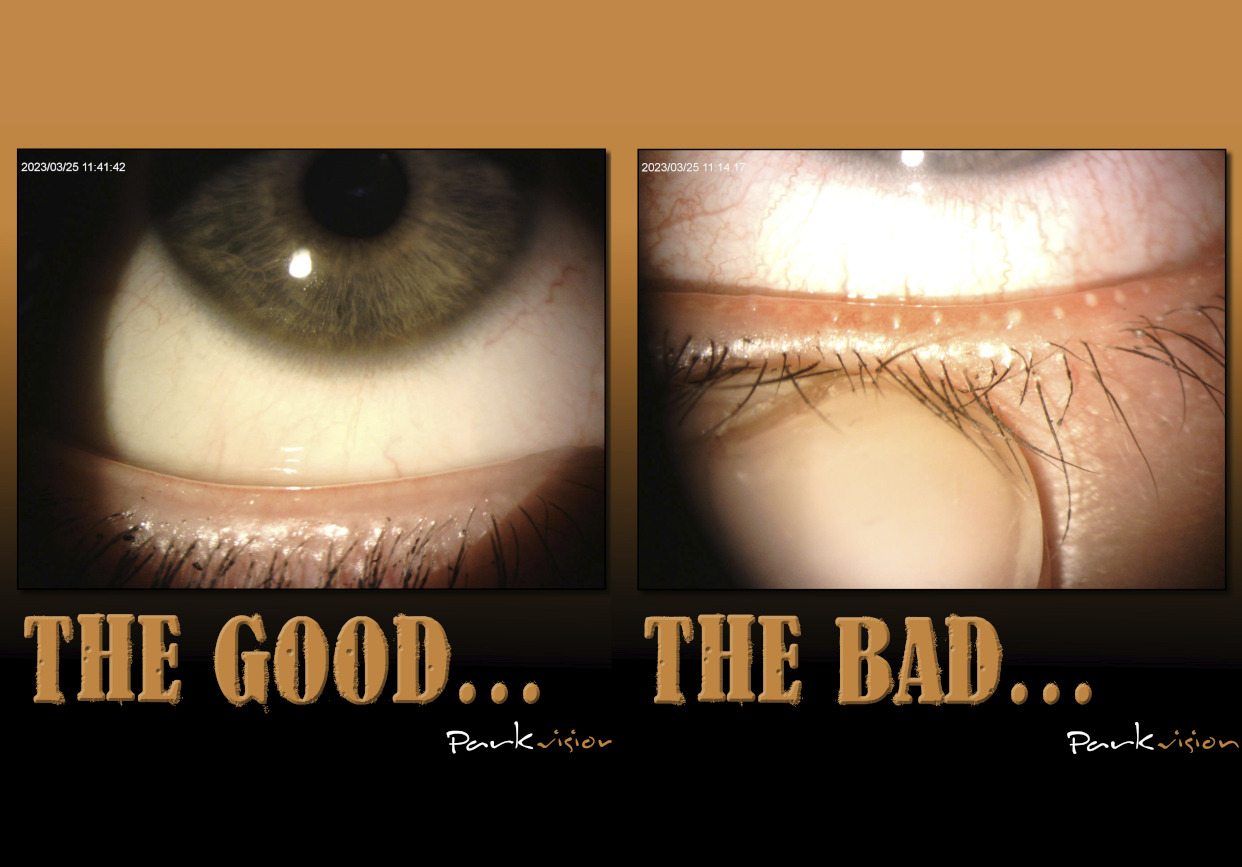Category: Eye health
The Good, The Bad…and the Gunky!!!
Meibomian gland dysfunction, or MGD, is a common eye condition that affects millions of people worldwide. It occurs when the meibomian glands, which are located in the eyelids, become blocked or dysfunctional. These glands produce an oily substance called meibum that helps to lubricate the eyes, aids great vision by producing a smooth refractive surface and prevents tear evaporation. When the meibomian glands are not functioning properly, it can lead to dry eyes, discomfort, poor vision and other eye-related symptoms.
Symptoms of MGD
The symptoms of MGD can vary from person to person, but some of the most common ones include:
- Dry eyes
- Itching or burning sensation in the eyes
- Redness or swelling of the eyelids
- Blurred vision
- Sensitivity to light
- Feeling like there is something in your eye
- Eye fatigue or discomfort, especially after reading or using a computer for extended periods.
Causes of MGD
There are several factors that can contribute to the development of MGD, including:
- Aging: As we age, the meibomian glands can become less effective at producing meibum, which can lead to blockages.
- Hormonal changes: Hormonal changes, such as those that occur during pregnancy or menopause, can also affect the function of the meibomian glands.
- Environmental factors: Exposure to certain environmental factors, such as air pollution or dry air, can also contribute to MGD.
- Certain medical conditions: Medical conditions such as rosacea, blepharitis, and seborrheic dermatitis can also lead to MGD.
Treatment of MGD
Treatment for MGD typically involves a combination of lifestyle changes and medical interventions. Some of the most common treatment options include:
- Warm compresses: Applying warm compresses to the eyes can help to soften the meibum and unclog the meibomian glands.
- Lid hygiene: Cleaning the eyelids regularly can help to remove any debris or bacteria that may be contributing to the blockages.
- Medications: There are several medications that can be used to treat MGD, including antibiotics, anti-inflammatory drugs, and artificial tears.
- Intense Pulsed Light Therapy (IPL): This treatment uses intense pulses of light to stimulate the meibomian glands and improve their function.
- Activa: This is a new medical device that uses heat and pressure to clear blockages from the meibomian glands.
Prevention of MGD
While MGD cannot always be prevented, there are several steps you can take to reduce your risk of developing the condition. Some of the most effective prevention strategies include:
- Practice good eyelid hygiene: This includes cleaning the eyelids regularly and avoiding the use of harsh soaps or other products that can irritate the eyes.
- Use a humidifier: Adding moisture to the air in your home or office can help to prevent dry eyes and reduce your risk of developing MGD.
- Take breaks from electronic devices: Taking regular breaks from using electronic devices, such as computers or smartphones, can help to reduce eye strain and prevent MGD.
- Wear protective eyewear: If you work in an environment where there is a lot of dust, wind, or other environmental factors that can irritate the eyes, wearing protective eyewear can help to reduce your risk of developing MGD.
At Park Vision we offer a complete treatment programme for MGD in our Dry Eye clinic. A combination of lifestyle changes, supplement and dietary advice, lid care regime, IRPL, and Activa are incorporated very successfully to manage the condition.
